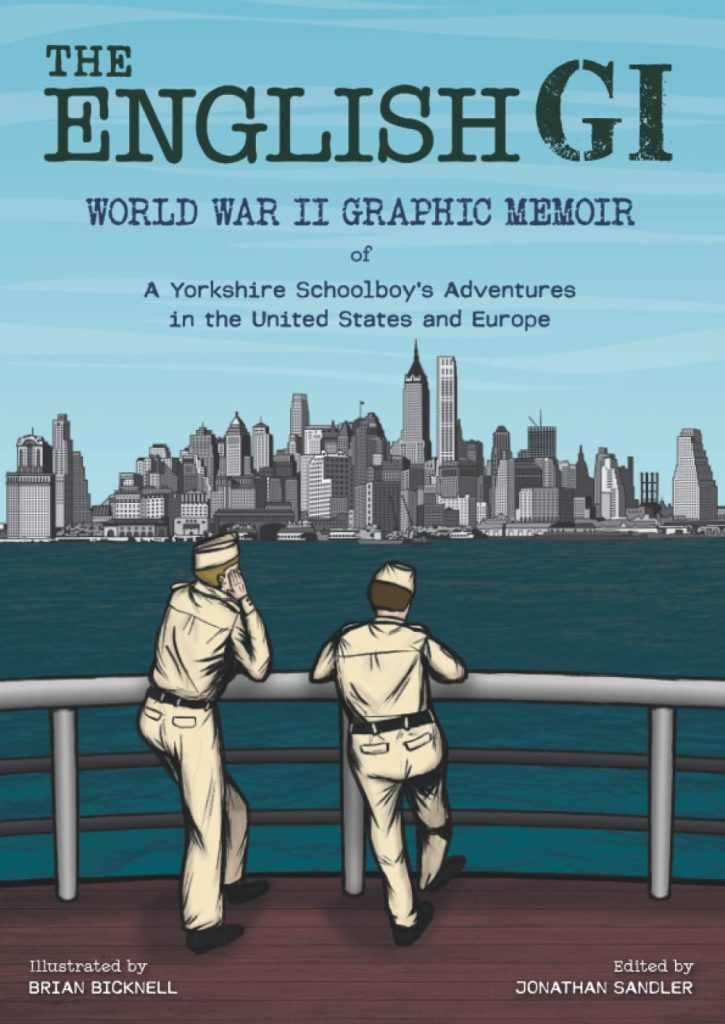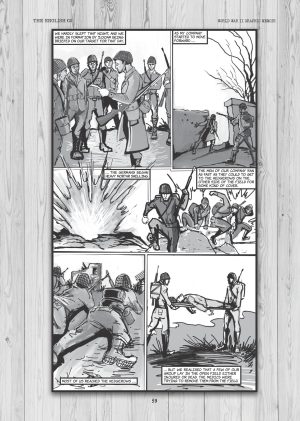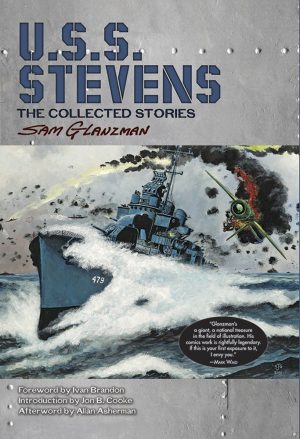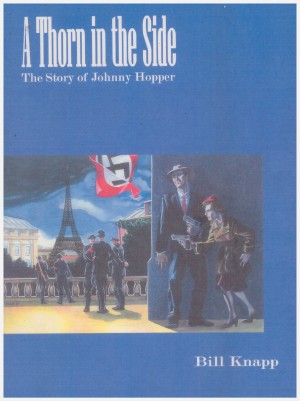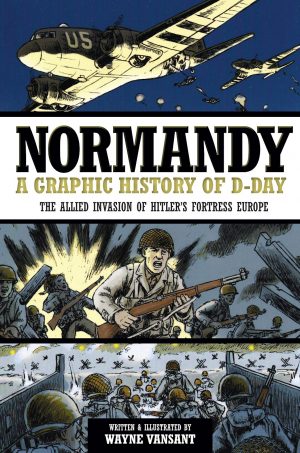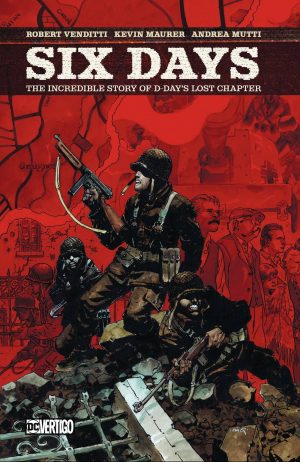Review by Frank Plowright
Bernard Sandler had always been reluctant to talk about his World War II experiences, but in 1995 he wrote a memoir, and The English GI is based on that, his son Jonathan breaking the story down for illustration by Brian Bicknell.
So why the English GI? Well, the truth is so fanciful it would snap plausibility if made up. In 1939 sixteen year old Bernard was on a trip to the USA with a schoolfriend when war erupted in Europe, preventing his return. Fortunately his parents had friends in New York who agreed to take him in. Both the trip to the USA and recollections of a trip to Latvia when fourteen indicate Sandler’s family as not being short of money in an era when foreign travel was relatively rare, but living in New York he worked to pay for his tuition. In 1941 the USA entered World War II, for which everyone aged eighteen or over had to register for the armed forces, and Sandler was conscripted.
The drawn recollections are separated by pages quoting directly from the memoir, offering greater context or background. It adds to an interesting, but never compelling story that’s held back further from maximum appeal by Bicknell’s basic art. The detail is there, but without a great deal of imagination or personality, with Bicknell for the most part just drawing what’s already described in the accompanying narrative captions. He is obviously restricted by a faithfulness to the text, and much of what needs to be said doesn’t lend itself well to illustration.
By the time Bernard joins the army in 1943 he’s been away from his family for four years, and the call to duty coincides with his being sworn in as an American citizen. It’s late in 1944 before he’s shipped back to Europe as an infantryman, fighting the German forces retreating back into their country via the French district of Lorraine.
So many people fought in World War II, so many died tragically young, and so many awoke every morning not knowing if they’d live to see their bed that night. It’s unimaginable to most UK and US citizens today. However, for all that, Sandler’s memoir is a magnificent slab of family history, but his experiences are those of so many others, lacking enough to fascinate a wider audience, and items that might are downplayed. One is the peril of two English Jews heading across Nazi Germany on their way to Latvia in 1937, and it seems odd that Bernard’s father would endanger his fourteen year old son in this way.
There is some compensation in Jonathan’s informative text pieces following the graphic novel, filling in on Bernard’s post-war life, expanding on the trip to Latvia, and offering greater detail about many items mentioned in the story. The feeling is that The English GI would be an improved experience for greater context as Bernard’s story plays out, even at the cost of straying from his text.
